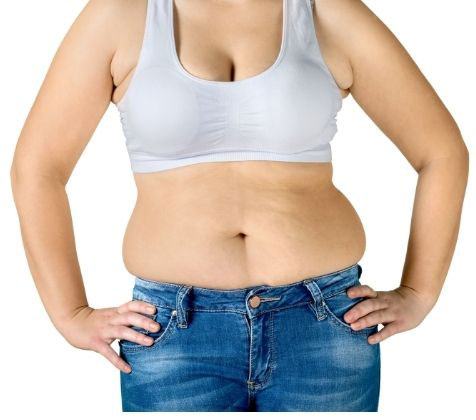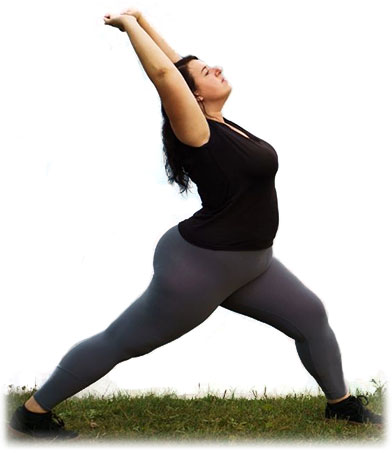Since I share weight loss strategies with awesome people like you, naturally my content may contain affiliate links for products I use and love. Should you take action (i.e subscribe, make a purchase etc) after clicking one of these links, I’ll earn some coffee money – Which I promise to drink whilst creating more helpful content like this!
What Are you Really Willing to Sacrifice to lose weight and keep it off for good?
So, every year you’ve watched your friends lose weight and keep it off and each year, despite your best intentions, you’ve watched your dress sizes increase from one size to another!
Sound like you?
 Losing weight can be daunting, not to mention scarring to your self esteem, however, the final results of a successful weight loss journey, and the health benefits that come with it, are life changing, to say the least.
Losing weight can be daunting, not to mention scarring to your self esteem, however, the final results of a successful weight loss journey, and the health benefits that come with it, are life changing, to say the least.
Guess the most obvious question to ask is, what are you really willing to give up in order to lose weight and keep it off for, well, for good shall we say?
Is that even a thing?
I’ll have it known that yes, that is a thing and, like 40% of Americans that made resolutions pre Covid Gym days to lose weight and get in shape come January – every year and failed, you’re not alone so thank you Jeebus!
According to research, 80% of all those weight loss New Year’s resolutions fail by February, and gyms always experience a decrease in traffic after the first and second months of the year as those who made New Year’s resolutions to get in shape lose steam.
Why is that?, I hear you ask
Thing is, when people buy gym memberships, despite having the best of intentions in mind, their commitments are only made in a charged emotional state. A charged state of mind is only good for short term motivation, but is virtually useless for objectives that require a greater length of time to accomplish.
Emotion is a chemical release yielding a physiological response. If someone attempting to get in shape is reliant upon this reaction alone to propel them towards working out, they’re almost assured to burn out, just as with resolutions.
To really lose weight my dear Willemina, you need long term goals and the staying power to run the course, no pun intended, meaning there’s some good news for you yet to reel Harry Styles in before he disappears into the sunset with that Wilde woman, erhm!
Can You Burn Stomach Fat that Fast – at Home?
I use fast here loosely, it’s a relative term when planning to lose weight and keep it off which to some, can be achieved in a matter of weeks whilst to others, year! All depends on a host of factors, which I go through below.

The short answer is yes, but you need to understand the process..
First things first, some must-have tools I would highly recommend to get yourself on your journey to looking like a celebrity final contestant from the biggest loser!
- A reasonably priced bathroom scale, one that works and preferably digital.
- A Quality kitchen Food Scale – there are a dime a dozen on amazon or your closest walmart
- Download a Calorie Counter app or, should you prefer old school, use a journal instead
Now that you’ve got your arsenal of household tools to stop yourself guilty tripping on your weight loss journey, are you ready for the real meat and potatoes (see what I did right there, clever eh?) that you came here for?
No matter how easy or daunting you feel the challenge to losing weight is, always remember this one thing – The only proven way to lose weight is through a calory deficit.
What is a caloric deficit in desire to lose weight and keep it off for good?
Calories are the units of energy you get from foods and beverages, and when you consume fewer calories than you burn, you achieve a calorie deficit.
Since the body stores excess energy as fat, it will burn those fat cells when you consume less calories so that you still have enough energy to move around and be active.
Sadly, calories are all the rage, considering the average American consumes about 17 teaspoons of added sugar per day!
That’s roughly twice the amount recommended for men and three times the recommended amount for women.
As a result, sugar is a main cause of the country’s obesity epidemic and appears to raise the risk of diabetes, cancer and Alzheimer’s.
“Sugar turns on the aging programs in your body,” Dr. Robert Lustig of the University of California, San Francisco says. “The more sugar you eat, the faster you age.” (His lecture on the topic has more than 12 million views on YouTube.)
Here’s the good news though: Cutting back on added sugars’ not as difficult as many people fear.
So then, how do I eat a caloric deficit diet?
Simple! Eat less than your TDEE! That’s literally it.
What’s TDEE?
To understand this, you should know about BMR and TDEE.

Your Basal Metabolic Rate (BMR) is the amount of energy (calories) you use just by being. Take it this way, if your body were to theoretically remain completely still for a day, that is how many calories you would need to stay at your current weight. This last part is important.
Your Total Daily Energy Expenditure is how many calories you use in a day including BMR and things like walking, sitting up, chewing, etc. Usually a couple hundred calories extra compared to BMR. To find out yours, use an online calculator.
How accurate are these calculators?
They are good educated guesses for what your TDEE is. However, you cannot 100% accurately pinpoint calorie burning without the proper medical equipment, so a TDEE calculator is an acceptable free alternative. It’s often within a 100 calories or so of your actual TDEE.
Okay, so I have my TDEE. Now what?
Yay, you’ve passed the first test, now, as stated earlier, you must now eat at a deficit!
There are approximately 3500 calories in a pound so, if you were to eat at a 500 calorie deficit (500 less than your TDEE) every day for 7 days in a week, you’ll have shed one pound essentially. Repeat this for 10 weeks, and you’ll have lost a whopping 10 lbs. That Simple!
This is science right here!
I also mentioned earlier that while TDEE is a good estimate, it’s not 100% accurate. You may find that your actual TDEE is 100-250 calories off from the guess. The best way to find this out is to weigh yourself weekly and adjust your intake accordingly. ie: If you notice that you’re only losing 0.8 pounds of weight instead of a full pound, reduce your calorie intake by 100 calories or so. Keep doing so until you are losing the correct amount of weight.
As you lose, it’s a good idea to recalculate your TDEE every 5-10 pounds and adjust your diet slightly. This will ensure your loss doesn’t slow down too much.
Does this mean I can just eat literally nothing or at an 1000+ deficit to burn the fat even faster?
Well, yes and no.
The body is extremely efficient at using calories and will dig into stored energy sources if it need be. Also, large deficits can lead to muscle atrophy (muscle loss) in addition to fat loss. Those without an excessive amount of fat to lose (IE: Non-obese) should not attempt 1000 deficits. In general, anyone under 15% bodyfat should stick to a 500 calorie deficit. Any more can lead to unnecessary muscle atrophy.
Based on the above, you can literally lose weight without exercise, how about that!
More Ways to lose weight without exercise!
So, as mentioned at the beginning of this rambling article, firstly I recommended a calorie counter. After all, how can you eat at a deficit if you don’t know what the value of what you’re eating is? A calorie counter, whether you choose the app route or journaling notepad style, is a way to track how many calories you consume daily.
Tracking your daily calorie intake shows commitment and builds up on that momentum.
I personally recommend something like MyFitnessPal due to its massive database and simple user interface. The phone app also has a barcode scanner which makes logging snacks much easier. You can also do this manually via any number of methods, but I’d highly recommend an app.
All you have to do at this point is set your daily goal (500 less than your TDEE) and log the food you eat each day! Food that doesn’t come prepackaged is a little difficult to find amounts of (IE: 1 Chicken Breast) so this is where that food scale comes in handy. All FDA-regulated foods are required to have a serving size in grams in addition to the serving size recommended on the box (IE: 1/2 cup equals 28g). This is how a lot of snack companies fool you into thinking a serving is less calories than it actually is. All food can be accurately measured via weight.
Real World Steps to Help You Lose Weight and Keep it off!
So just salads and veggies from now on is it?

This is one point a lot of people get hung up on and don’t quite understand what a deficit is. While salads and veggies are great resources for vitamins and other nutrients, you don’t have to restrict any sort of food from your diet. That’s right. Pasta, ice cream, snacks, chips, dips, nachos, and all that other good stuff can be included on your diet. That being said, you MUST factor them in to your daily allowance of calories.
Example scenario: You’re eating at 1500 calories a day – a 500 deficit from a 2000 calorie TDEE. You can have 500 calories per meal if you plan on eating breakfast, lunch, and dinner. So, let’s say you only have access to ice cream and brownies that day. Well, if you eat exactly 1500-calories-worth of ice cream and brownies for the day, you are still losing weight!
Sounds too good to be true, right? Well believe it. Back in 2010 Mark Haub, a professor of human nutrition at Kansas State University proved that it’s calories, not nutrition or ingredients, that help you to lose weight and keep it off. He performed the now infamous twinkie diet, eating mostly sugar and carbs as his daily intake with very little protein or other nutrition. He lost over 20 pounds!
So feel free to partake of your favorite snack or food here and there. Just don’t go too crazy, stay within your deficit! Moderation is key!
What about carbs/keto/paleo/green tea/fish oil/whey supplements?
Low carb diets often don’t really differ much in terms of weight loss for most folks. In worst-case scenarios, they can be extremely harmful to the body.
Supplements like green tea powder, fish oil, and others are generally not needed for weight loss unless you’re suffering a deficiency. If you feel nervous, get a good multivitamin and call it a day. Most folk will get all the nutrients they need from plain old food.
Whey protein powder is an excellent crutch for those that can’t get in proper amounts of protein in their regular diet, but unless you exercise you may find that your body’s not utilizing it to burn stomach fat fast enough. The recommended daily intake of protein for the average man is only 60g. If trying to preserve/build muscle, you should eat 0.8g per pound of lean body mass (your weight minus your amount of body fat).
What about exercise in one’s ability to lose weight and keep it off?
Exercise is great in addition to weight loss! Not only is it healthy, but it also keeps the muscles active to help prevent muscle loss. For some people it can even be therapeutic or relaxing.
How long will it take to lose weight and keep it off?
This one’s not fun to answer. Depends on how big you are and on how much weight you desire to lose. The hard truth is that weight loss is fairly slow for the average person, and even an obese dieter could take a year or longer to shed most of the weight. The bright side is that it’s totally doable and you don’t have to starve yourself to do so. It just takes a little bit of effort and dedication. Eyes on the prize!
How long until I can go back to regular pizza and ice cream?
The key to losing weight isn’t just to lose it, but to maintain the body you’ve sculpted. To maintain, you need to find your now-current TDEE and not exceed that amount!
Most of all, keep a positive attitude, use affirmations for weight loss if you must to keep you grounded and focused on your goals, but negativity or self pity’s not the answer!
You’ve read this far.. Rooting for your every success on your weight loss journey!
Good Luck!
